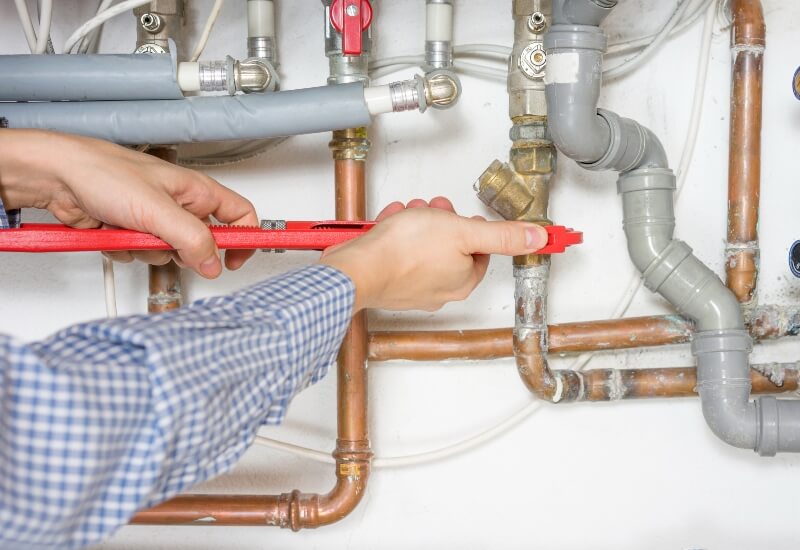In today’s rapidly evolving industrial landscape, the ability to effectively monitor and analyze data is more crucial than ever. Amidst the array of technological innovations, plumbing data tracking emerges as a pivotal tool for optimizing industrial operations. By strategically harnessing this powerful technology, engineers and stakeholders can ensure seamless operations, reduce costs, and enhance productivity.
The Rising Need for Plumbing Data Tracking
The industrial sector is increasingly recognizing the importance of real-time data analysis. Plumbing data tracking helps in identifying potential issues before they become critical problems. With precise insights, industries can prevent downtime, which can be costly and disruptive. As industries aim for more sustainable and efficient operations, the demand for such technologies continues to grow.
Integrating IoT with Plumbing Systems
The use of the Internet of Things (IoT) in plumbing systems has revolutionized how data is collected and used. Smart valves, for instance, play a significant role in this integration. These smart gas shutoff valves ensure that systems are not just reactive but proactive in addressing potential failures.
Benefits to Industries
By accumulating and analyzing data in real-time, industries can make informed decisions promptly. This not only boosts operational efficiency but also significantly reduces the risk associated with unforeseen plumbing issues. Engineers can track the wear and tear of components, assess their lifespan, and preemptively address any likely failures. To understand more about how smart valves are revolutionizing fluid control, refer to this detailed article on smart valves.
Role of Smart Valves in Data Tracking
Smart valves are not just control devices but critical data points. These valves, like the ones featured in the voice assistant integration solutions, are essential for collecting data related to flow rates, pressure levels, and temperature changes. The data acquired helps in maintaining optimal operational conditions, ultimately extending the lifespan of the entire plumbing system.
Evolution of Plumbing Technologies
The transition from traditional plumbing systems to smart, data-enabled solutions emphasizes the evolution of industry practices. The adoption of data-centric technologies highlights a shift towards more reliable and adaptive operations. Read more about smart valve implementation in industrial settings for a deeper understanding.
Case Studies: Successful Implementations
Numerous industries have witnessed remarkable enhancements in operational efficiency through plumbing data tracking. By implementing smart valve and sensor systems, businesses have reduced water wastage, improved resource management, and ensured optimal safety standards. The app-controlled valve solutions offer significant insights into such implementations.
Challenges and Future Prospects
While the benefits of plumbing data tracking are undeniable, challenges persist. Initial setup costs and the need for skilled personnel can be deterrents. However, the continual advancements in AI and machine learning will likely streamline these processes. The future of plumbing innovations, with enhanced data analytics capabilities, is promising.
The Role of Embedded Sensors
Embedded sensors, like those described in the sensor valve system, enable engineers to gain insights into intricate system dynamics without constant manual intervention. This automation paves the way for smarter and more efficient industrial operations.
Adoption Strategies for Engineers
For engineers aiming to integrate plumbing data tracking into their systems, a strategic approach is vital. Understanding the existing infrastructure, setting clear objectives, and collaborating with technology providers are essential steps in successful adoption. Utilizing resources such as this valve sensor system can aid in these endeavors.
Conclusion
As the industrial landscape continues to evolve, embracing technologies like plumbing data tracking isn’t just advisableit’s crucial. By leveraging this powerful tool, industries can secure their competitive edge, ensuring long-term success and sustainability.
FAQ Section
What is the primary benefit of plumbing data tracking?
Plumbing data tracking enables real-time monitoring, which can prevent costly downtimes and enhance resource management within industrial settings.
How do smart valves contribute to data collection?
Smart valves, with their advanced data collection capabilities, allow industries to monitor crucial variables such as pressure, flow, and temperature, facilitating better operational management.
Are there challenges to implementing plumbing data tracking in older systems?
Yes, integrating new technologies with legacy systems can pose challenges such as cost and technical compatibility. However, these can be mitigated with careful planning and investment in skilled personnel.
This article contains affiliate links. We may earn a commission at no extra cost to you.



